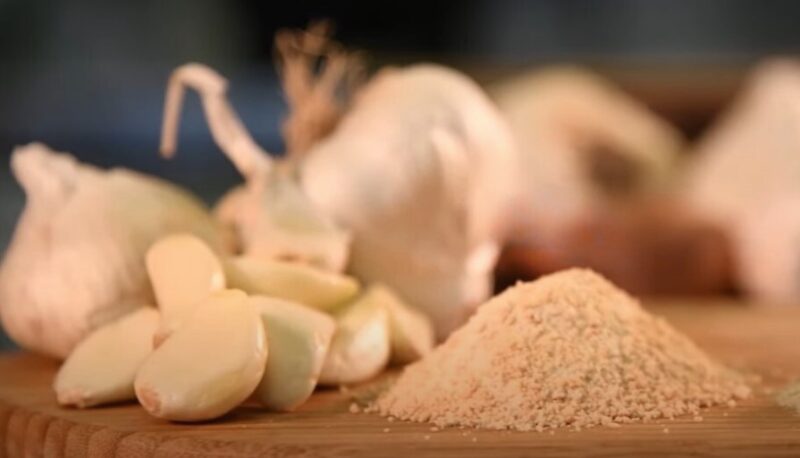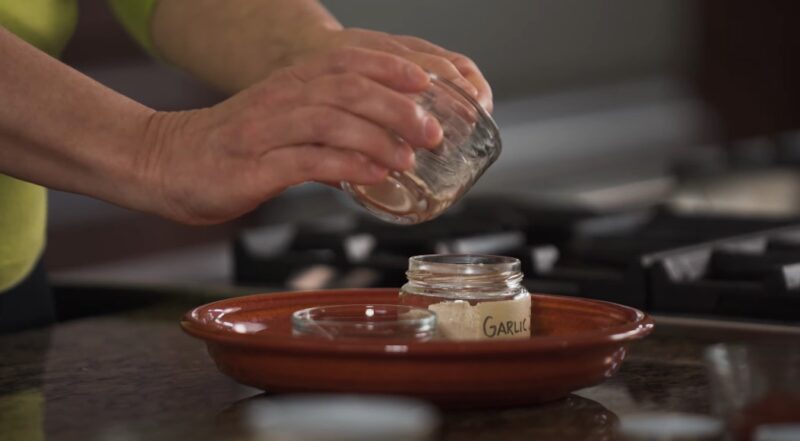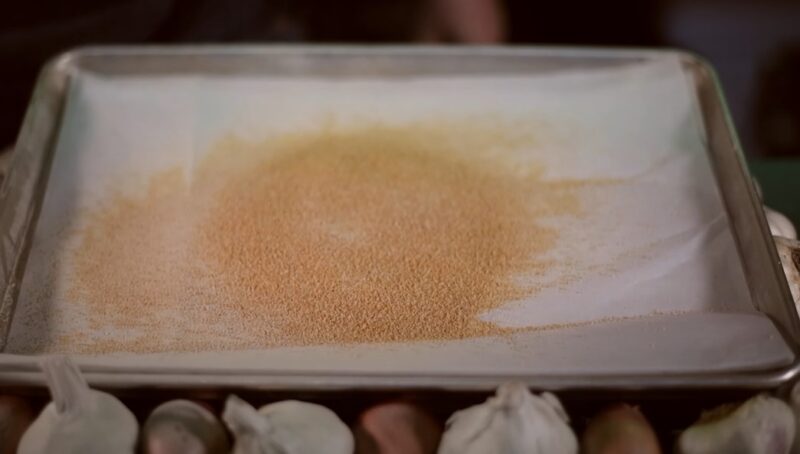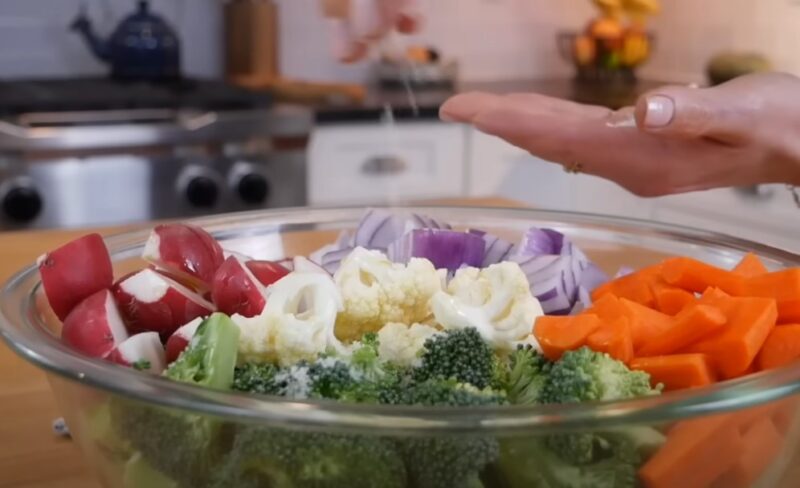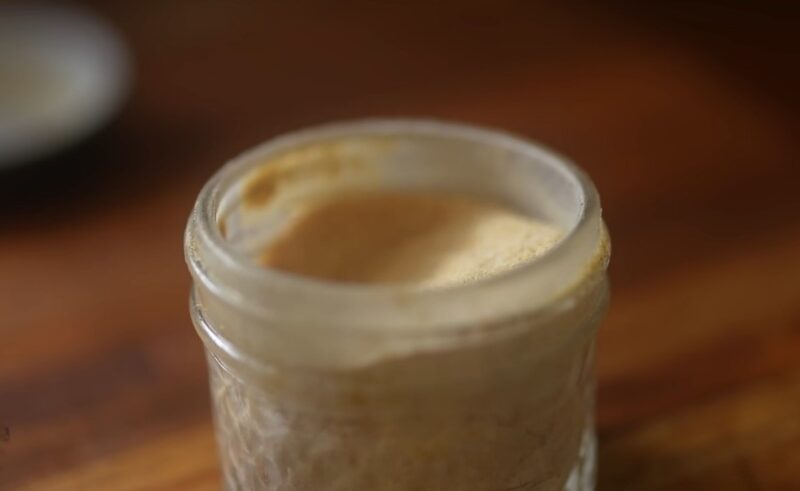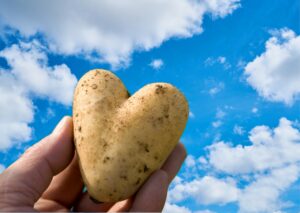So, you’re in the kitchen, halfway through your masterpiece recipe, and then it happens—you realize you’re out of garlic powder. Brilliant. Panic starts to set in, but then you remember you have garlic salt stashed in the cabinet.
The good news? You can make this substitution work. The bad news? Well, it’s not as simple as just swapping one for the other. But don’t worry, I’ve got the details.
Let’s dig into how to substitute garlic salt for garlic powder without turning your dish into a sodium disaster.
Garlic Powder vs. Garlic Salt: What’s the Difference?
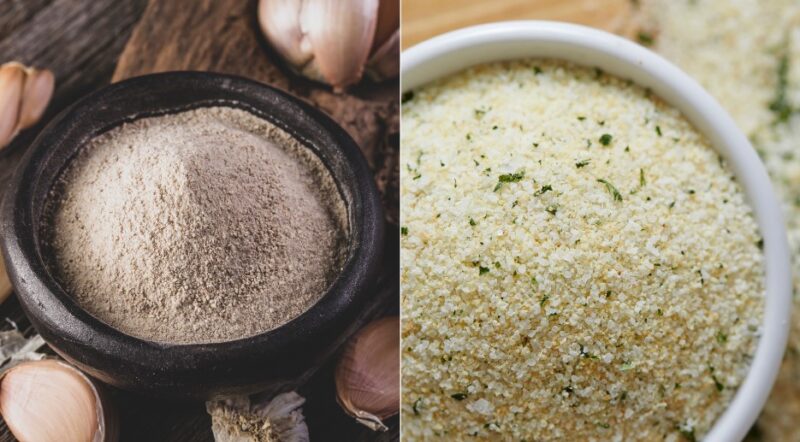
Before we get too excited, let’s talk about the difference between the two. Garlic powder is the hero you can rely on for a strong garlic punch without any added frills—just pure, dehydrated garlic ground into a fine powder.
It’s garlic, concentrated, with no extra seasoning. Garlic salt, on the other hand, is the two-faced cousin. It’s garlic powder mixed with salt, typically in a ratio of one part garlic powder to three parts salt.
Translation? If you toss garlic salt into your dish willy-nilly, you’re about to board the salty express train, and it’s a one-way trip.
How to Substitute Garlic Salt for Garlic Powder
Here’s the deal: you can use garlic salt instead of garlic powder, but you’re going to need to make some adjustments. Garlic salt isn’t a 1:1 substitute for garlic powder—if you try that, well, don’t say I didn’t warn you when your food ends up saltier than the Dead Sea.
The Magic Formula
- For every 1 teaspoon of garlic powder your recipe calls for, use 3 teaspoons (or 1 tablespoon) of garlic salt.
- Now, here’s the critical part—reduce the other salt in your recipe. Since garlic salt brings its salty buddy to the party, you’ll need to cut down on the rest of the salt you’re adding. For each teaspoon of garlic salt, reduce other sources of salt by around 2 teaspoons.
Simple, right? Well, sort of. Let me break it down further.
Practical Example
Let’s say you’re making a marinade for chicken. Your original recipe calls for:
- 1 teaspoon garlic powder
- 2 teaspoons salt
- 1 teaspoon black pepper
New Recipe Using Garlic Salt
- 3 teaspoons garlic salt (instead of the 1 teaspoon of garlic powder)
- Omit those original 2 teaspoons of salt (seriously, just cut them out entirely)
- 1 teaspoon black pepper
See what I did there? You increase the garlic salt to get the garlic flavor and eliminate any additional salt, so your dish doesn’t taste like you’re trying to preserve it for winter.
When Garlic Salt Substitution Works Like a Charm
There are a bunch of recipes where using garlic salt instead of garlic powder won’t lead to disaster. In fact, it might even improve things. Here are some great examples:
1. Rub and Marinades
For dry rubs on meat or marinades, garlic salt can actually be a smart move. Rubs tend to need salt anyway, so garlic salt lets you hit two birds with one stone. Just make sure you aren’t dumping in more salt later.
2. Soups and Stews
In soups and stews, salt and seasoning are added slowly over time. You can taste and adjust as you go, so swapping garlic salt for garlic powder can work, as long as you’re paying attention. But don’t get too salt-happy early on. You know, common sense.
3. Roasted Vegetables
Garlic salt can do double-duty in roasted veggie recipes by adding both flavor and seasoning. Skip any extra salt in the mix and let the garlic salt carry the seasoning load.
4. Pasta Dishes
Creamy or tomato-based pasta sauces work just fine with garlic salt—just be cautious with salted pasta water or any cheese (like parmesan) that could already add to the salt content. One wrong move and it’s a salt bomb.
5. Snacks and Appetizers
Ever made garlic bread with garlic powder? Garlic salt works just as well. Actually, it might be even better because, let’s face it, we love salt. Popcorn, garlic fries, garlic butter—it’s all fair game.
When Garlic Salt Substitution Is a Recipe for Disaster
Now, just because garlic salt works in a lot of cases doesn’t mean it’s always a good idea. There are times when you should absolutely not make the swap.
1. Baked Goods
Garlic-flavored bread, crackers, or savory muffins? They rely on precise amounts of salt to get the texture and rise just right. Swap garlic salt for garlic powder here, and you might end up with something too salty, too dense, or just plain wrong.
2. Dishes with Pre-Salted Ingredients
Anything with cheese, soy sauce, or canned goods already has a decent amount of salt built-in. Toss in garlic salt on top of that, and congratulations, you just oversalted your food into oblivion.
3. Low-Sodium Diets
If you’re trying to watch your sodium intake, garlic salt is a huge no-go. You’ll want to stick to garlic powder or, better yet, make your own low-sodium garlic salt (which I’ll get into in a minute).
How to Make Your Own Garlic Salt
What if you don’t have garlic salt either? No worries—you can make your own in about 10 seconds. Here’s the simple breakdown:
Ingredients
- 1 part garlic powder
- 3 parts salt
Directions
Mix them together, store in an airtight container, and boom—you’ve got garlic salt. If you’re on a low-sodium diet, feel free to tweak the ratio to have less salt and more garlic powder.
Or, better yet, use a salt substitute. You’re welcome.
When All Else Fails, Taste as You Go
If all of this seems like a lot to remember, don’t stress. The secret weapon in any substitution situation is to taste your food as you go. You can’t really mess up if you adjust the seasoning bit by bit.
Add a little garlic salt, stir, taste, then decide if it needs more salt or garlic flavor.
Garlic Salt Can Save the Day (If You’re Smart About It)
Garlic salt might not be exactly like garlic powder, but it can absolutely work as a substitute in a pinch. The trick is balancing the saltiness so you don’t end up with food that makes you chug a gallon of water after each bite.
Just remember the ratio—3:1, and adjust your other salt accordingly. You got this. So, next time you’re out of garlic powder, don’t freak out. Grab that garlic salt, make the adjustments, and keep on cooking.

